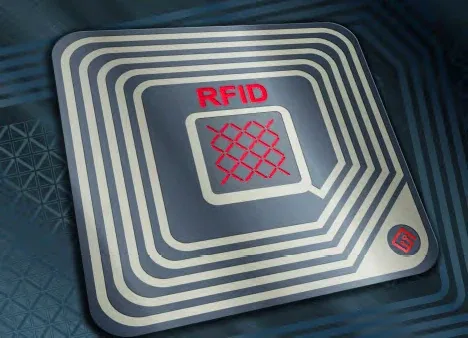
MacroFab Blog
Inventory and supply chain management software and processes play a pivotal role in enhancing the safety, efficiency, and security of electronics manufacturing operations. The most complex systems use automated robots and guided vehicles directed by sophisticated algorithms. Other systems may be less complex, but still rely on sensors and data to pinpoint the location and movement of inventory.
These algorithms rely on massive amounts of data – more data points than human beings could ever process or understand quickly enough to be of any real value. The result? A significant reduction in operational congestion, bottlenecks, and workplace injuries.
Using the Internet of Things, sensors collect vital data such as temperature, humidity, vibrations, motion, etc. This data is wirelessly transmitted back to the central processing unit (CPU) for more in-depth analysis.
While fixed sensors (i.e. attached to the wall or a flat surface) are commonplace in manufacturing settings, there’s a growing trend toward mobile smart sensors. These portable devices ensure supplies and inventory are not only stored and transported in optimal environmental conditions but also maintain operational security. Operational security is vital for electronics inventory, providing
Intellectual property protection: Technology-based electronics often use proprietary designs, software, and other intellectual property, making unauthorized access to inventory data a security risk.

- Loss avoidance: A company can suffer substantial losses when electronics are stolen, sold on black markets, and stolen information is acquired.
- Competitive advantage: Knowledge about a company’s stock levels, product details, or upcoming releases can give competitors an undue advantage. By maintaining operational security, companies can protect their competitive edge.
- Business continuity: If certain essential components are stolen or misplaced, it can delay production or distribution of final products.
- Reputation management: When a company suffers a security breach that results in substantial financial or data loss, it can damage its reputation.
Given the above reasons, it’s clear that maintaining operational security is not just about protecting physical assets but also about ensuring the smooth running of business operations.
Benefits Of Sensors and Automation in Inventory Management
In the last decade, inventory and supply chain tracking have revolutionized the manufacturing landscape, offering unparalleled transparency for contract manufacturers (CMs) and Original Equipment Manufacturers(OEMs) alike. CMs can now trace how materials and components move from their source to the factory. In parallel, OEMs can track products right from their CM’s factory floor to their doorstep.
Amplifying this transparency is the ability to continuously monitor the environmental conditions– like temperature, humidity, vibration, airflow, and even the proximity to other objects–in which these materials or products are stored. Maintaining materials within specific temperature-controlled and humidity-controlled environments is vital. Such diligent monitoring can mitigate potential concerns related to storage degradation over time, ensuring materials and electronic components remain in their optimal state.
Checkpoint
By tracking inventory, materials, and equipment, and monitoring their health with sensors, manufacturers can predict potential issues before they occur.
It is also possible to enhance customer service by tracking inventory in real-time: being able to forecast potential shortfalls in deliveries due to inclement weather or other unforeseen shipping issues allows manufacturers to make amends quickly. Goods and products are no longer lost en route, saving money and time that would be spent in replacing them.
The overall operational knowledge gained by implementing RFID tracking and smart sensors is the largest single driver – the more you know about how your business and/or facility runs, the better your chances of reaching peak efficiency. By tracking inventory and materials along with utilizing sensors to monitor the health of equipment and devices, manufacturers can predict potential issues at every stage from supply and material procurement to product delivery and head them off at the pass – and the benefits will be realized by both the manufacturer and the OEM.
How Automated Inventory Management Works

Automating inventory management begins with real-time inventory and material tracking, commonly achieved using RFID tags. The technology is both straightforward and cost-effective. Importantly, RF transmission rarely interferes with other wireless communication protocols.
The ability to pinpoint the exact location of inventory offers significant benefits to CMs and OEMs. Gone are the days when supplies and products languish on a shelf while people desperately try to retrace their steps to locate them. Modern sensors monitor local environments for motion and changes in position using WiFi, Bluetooth, or other transmission standards to determine when inventory moves. These sensors relay data to gateway nodes which undertake preliminary processing before sending the information to the cloud or a centralized processor.
Some “smart sensors” even come equipped with processors, storage, and diagnostic tools of their own to perform some of the functions traditionally pushed off on gateway devices or the CPU. Moreover, real-time inventory monitoring allows products or prototypes to be secured, using RFID tracking and proximity sensors to prevent unauthorized access. Consumer electronics and electric vehicle manufacturers have used real-time tracking to ensure certain technologies or components remain hidden from prying eyes.
A sensor network with wireless connectivity does present security risks, however, as anything that can be accessed remotely can be compromised. When implementing sensor networks, you should be aware of their vulnerabilities.
Conclusion
Although the cost of RFID tracking chips and almost all types of smart sensors continues to decrease over time, implementing inventory tracking hardware and software still represents a significant financial investment. By collaborating with a Contract Manufacturer (CM) that already boasts an established automated inventory system, OEMs can tap into the advantages of real-time tracking without the hefty investment. This partnership not only reduces the financial burden but also streamlines the integration process, ensuring a faster realization of the associated benefits.
As inventory management software becomes more compatible with more platforms and sensors and actuators get smaller and less obtrusive, integrating inventory management technology into existing manufacturing infrastructures is becoming easier. However, companies will likely have to invest more in human resources as sensor networks grow larger and bigger to run and maintain such intricate and complex systems.
Related Topics
Mapping Out a PCBA Supply Chain Strategy in Five Moves
Companies should create unique vendor relationships with numerous international suppliers due to the necessity of having to source components globally.
New Inventory Features Streamline Material Management at MacroFab
A display of some new features for the platform that enhances the the management of inventory and material at MacroFab.
MacroFab’s Modern Approach to Strategic Sourcing
Many Contract Manufacturers (CMs) and Original Equipment Manufacturers (OEMs) have some sort of procurement team. So what makes MacroFab so different?
Need Help Managing Your Inventory?
Flexible Inventory ManagementAbout MacroFab
MacroFab offers comprehensive manufacturing solutions, from your smallest prototyping orders to your largest production needs. Our factory network locations are strategically located across North America, ensuring that we have the flexibility to provide capacity when and where you need it most.
Experience the future of EMS manufacturing with our state-of-the-art technology platform and cutting-edge digital supply chain solutions. At MacroFab, we ensure that your electronics are produced faster, more efficiently, and with fewer logistic problems than ever before.
Take advantage of AI-enabled sourcing opportunities and employ expert teams who are connected through a user-friendly technology platform. Discover how streamlined electronics manufacturing can benefit your business by contacting us today.